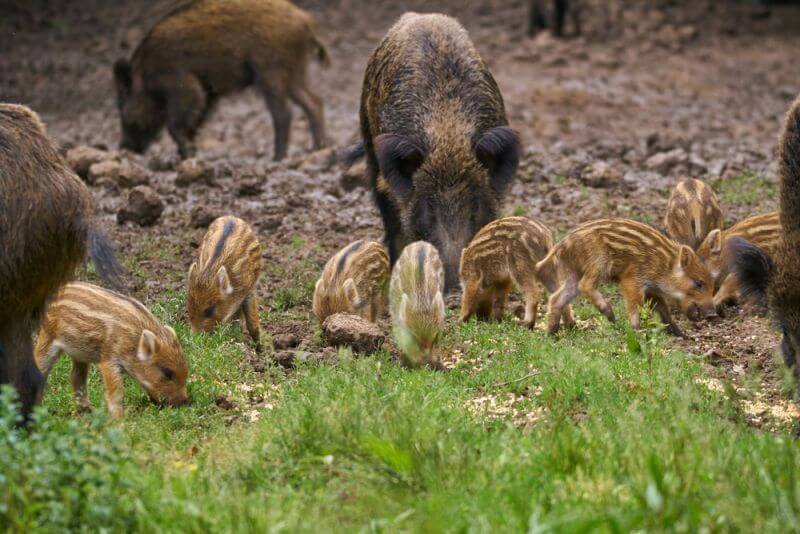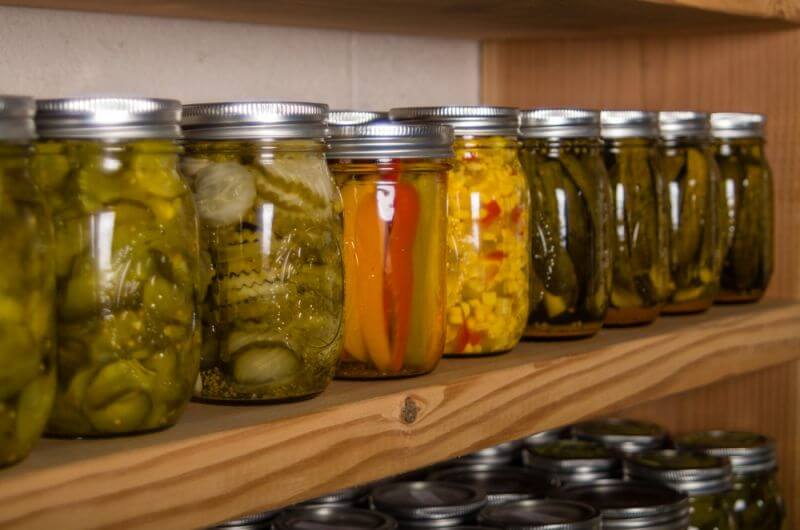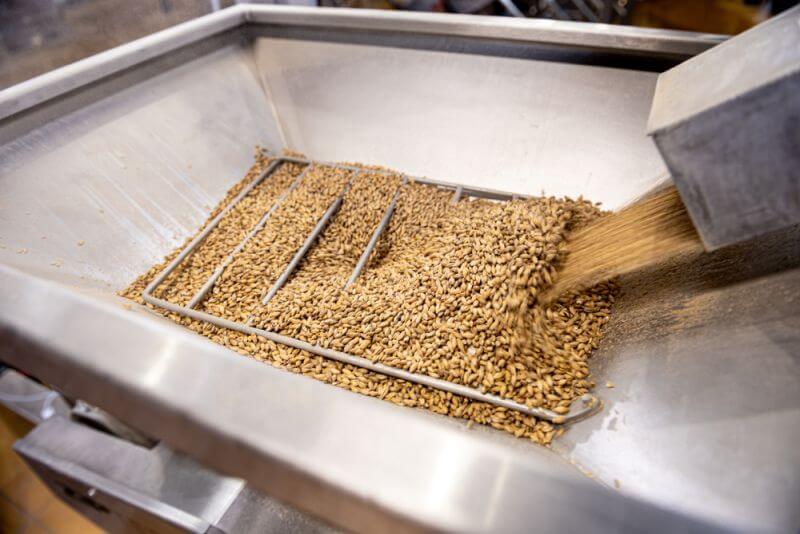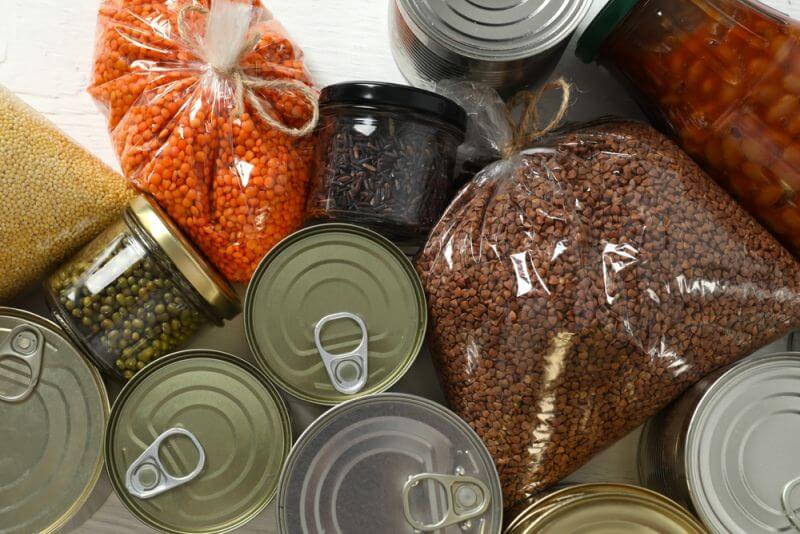Feral pigs could be a double-edged sword for survivalists. A herd can make a mess of a garden in a hurry, but if the world food supply is disrupted and survivalists can adapt to live with this non-native specie which is both a source of ham, bacon and pork chops, and hard to eradicate, things might not be so bad.
Our Fragile World Food Supply
The world is very well designed to prevent the extinction of most species by overhunting. There are many remote pockets for game and fish to retreat to until human pressure from overhunting has passed and they can once again increase their numbers. But the ever-increasing population of humans and the march of technology has tilted the scales. Armadas of factory ships, often from nations who do not respect the territorial waters, fisheries and preserves of other nations, are scouring fish, marine mammals and invertebrates from the world’s oceans. Even in the U.S.A., many of our rivers and lakes require fish hatcheries and constant restocking to maintain fish populations. And the populations of many species of large mammals, birds and reptiles could not survive without regulations on habitat destruction, counter poaching operations, and the regulation and conservation of the efforts of ethical hunters and fish and game departments.
Urbanization and globalization have pushed most of the planet to the point where disruption of the world’s farming, ranching or food distribution networks would result in starvation on a heretofore unknown scale. This is worrying because disruption of the food supply on the regional and even global scale has been a regular occurrence throughout history. That it will happen again is assured with a high degree of statistical certainty.
This should not be particularly worrying because we have survived it many times before, right? Well, not so much. Our planet has endured 33 minor and major extinction events that we know of. Life on Earth has been rebooted on five separate occasions. Of the 33 extinction events, humans were the probable cause in two of them. That is quite and achievement considering the relatively short time of our existence. (Wikipedia, 2024)
The problem now is that urbanization and globalization are things we’ve never done before. In the developed world, less than 2% of us feed the other 98%, and in most of our lifetimes, most of the world’s population will live in cities. We are in uncharted waters. There is no manual on how to reboot the world food system. We have a few seeds socked away in Svalbard but that’s about it. Increasingly, we are fed by monoculture from factory farms and with fish from factory ships.
Life on Earth, and food production, have always been vulnerable to space rocks, big volcanoes, changes in world’s ocean currents, supernovas, and changes in atmospheric oxygen levels. But now our food supply system is vulnerable simply because it was engineered by humans. Unlike nature, we engineer fragility into everything we create. So, the now global food system is also vulnerable to anything that affects the world banking, shipping, power, fossil fuels and food production systems! We have set it up so that basically any high order global volatility will now affect our food supply. We have gone from our food supply system being vulnerable to a handful of threats that occur once every so many thousand or million years, to it being vulnerable to a long list of threats, many of which happen every hundred years or so.
The Two Most Common Plan B’s
So, what’s your plan the next time our food supply is disrupted? The two plans I hear the most often are: “I’m going to till my lawn under and plant seeds out of a can I bought off the internet.” and, “I’m going to grab my pack and my rifle and head for the hills.”
If you are planning on the first one, if you have enough food storage to get you through a couple of years of poor harvests, are expanding an existing garden instead of tilling under your lawn, you already know how to garden, how to amend the local soil, have heirloom seeds adapted to your region instead of seeds adapted to grow someplace else, you have some chickens, and fruit trees and maybe some nut trees, a source of firewood, you’re also able to defend it, have an adequate water supply, and so on … that could work. But expanding an existing garden that is already producing is a whole different ballgame than starting from scratch mid-disaster.
In short, if producing your own food is your “plan B”, your best shot at making it work is by starting now and producing at least some of the food you eat yourself. From that first morsel, every bite of food that you produce yourself puts you on the path to food security, fewer GMOs in your diet, less mystery about what you are putting into your body, more and peace of mind, and better health.
If your plan is to grab your pack and rifle and head for the hills, you need to be someplace with a lot of remote land, where animal populations will not be devoured by millions upon millions of starving humans. Families who rely on subsistence hunting and fishing for even a portion of their food are having a much harder time than they did just twenty or forty years ago, even in Alaska.
The problem is that there are just so many more humans than big game animals now. There is one deer for every ten people in the U.S.. (Smith, Deer Population by State, 2024) There is one elk for every 33 people. (Smith, Elk Population by State, 2024) There is a moose for every 90 people, and so on. (Smith, Moose Population by State, 2024) You would need several animals per person per year, and a way to store the meat, to feed yourself. If a significant percentage of the population heads for the hills in a disruption, the big game will soon become far too scarce to be a reliable food source by itself, so hunter-gatherers would need to rely primarily on wild edibles, fungi, small game, fish, insects, and perhaps the occasional big game animal while they can still be found.
However, there is one factor that may affect the homesteader, the hunter-gatherer, and those attempting a mixture of these two strategies: The feral pig invasion.
The Feral Pig Invasion
Pigs are brutal, omnivorous, reproduce quickly, and have already spread to all but a handful of states. The population of feral swine has exploded into the millions, damaging farms and homesteads across the nation to the tune of $2.5 billion per year.
Government efforts to control the spread, where they exist, have been ineffective. Feral pigs may be a mixed blessing for survivalists. On one hand, they are dangerous, and a herd can root up a garden and turn it into a compost pile overnight. They damage crops, destroy fences, kill lambs, and ruin watering holes. On the other hand, most of the nation will soon have a wild protein source that they may initially have a harder time hunting to extinction than the local big game. (Thomson, 2023)
Feral pigs could also be domesticated. Wild pigs were first domesticated around 9,000 years ago in modern-day China and Turkey. A 2007 genetic study of European pig populations showed that domestic pigs were brought to Europe around 7,500 years ago but over years so many European wild boars were domesticated and mixed with them that their genetics are now mostly that of the European wild boar which are now extinct. (Fessenden, 2015)
If populations continue to grow at the current rate, and to date I see no meaningful effort to stop it, if (when) the food supply is disrupted, hunter-gatherers could add feral pork to the menu and homesteaders could domesticate them. There is already one feral pig for every 5 or 6 wild deer in the US. If not controlled, we will end up with more pigs than deer. Adding millions of animals to the equation.
Hunters kill feral pigs, but not nearly enough to control the spread. Dozens of journalists allege that hunters are responsible for the spread of feral hogs, releasing them into new areas so they can hunt them. These articles have led to states banning the hunting of feral hogs, yet not one of the dozens of articles I researched on the topic provided any evidence of even one such release, much less that it is a widespread problem.
In any case, releasing non-native species is already against federal law. Punishing law abiding hunters for the alleged actions of criminals, and wasting meat makes no sense to me.
It hasn’t worked with gun control, yet anti-gun activists reason that more gun laws will reduce violent firearms-related crime. They think a kid who is going to shoot up his school is going to say, “Oh, well I would have broken 23 laws, but breaking 24 laws, well, that’s where I draw the line!” A murderer or a drug dealer couldn’t care less if he breaks ten laws or twenty. Half of active shooters die in the process. What do they care about how many laws they break?
Yet some states think restrictions on law abiding hunters are going to curtail illegal activity by criminals. The “us vs. them” mentality has blinded them, leaving them incapable of telling the good guys from the bad ones. Hunting is a very safe activity, more so than most other sports (it’s even safer than golfing … as long as you don’t go with Dick Cheney), and hunters are some of the most law-abiding folks I know. (NSSF, 2011) Banning the hunting of feral hogs merely ensures that tens of thousands more hogs will continue to breed and those who would have eaten from their own zip code will have food shipped to them instead. That’s bad for the farmers, bad for the hunters, bad for the state, and bad for the planet … leaving only the activists/journalists/politicians happy.
References
- Fessenden, M. (2015, September 1). Pigs Aren’t Quite as Domesticated as People Once Thought. Retrieved from smithsonianmag.com: https://www.smithsonianmag.com/smart-news/pigs-are-mix-several-wild-populations-and-not-domesticated-thought-180956456/
- NSSF. (2011, December 5). Huntingn is Safer Than Golf and Most Other Recreational Activities. Retrieved from nssf.org: https://www.nssf.org/articles/hunting-is-safer-than-golf-and-most-other-recreational-activities/
- Smith, S. B. (2024, February 15). Deer Population by State. Retrieved from wildlifeinformer.com: https://wildlifeinformer.com/deer-population-by-state/
- Smith, S. B. (2024, January 28). Elk Population by State. Retrieved from wildlifeinformer.com: https://wildlifeinformer.com/elk-population-by-state/
- Smith, S. B. (2024, March 13). Moose Population by State. Retrieved from wildlifeinformer.com: https://wildlifeinformer.com/moose-population-by-state/
- Thomson, J. (2023, March 18). America’s Feral Hog Problem is About to Get Even Worse. Retrieved from newsweek.com: https://www.newsweek.com/feral-hog-wild-boars-breeding-problem-america-1787713
- Wikipedia. (2024, August 1). List of Extinction Events. Retrieved from wikipeida.org: https://en.wikipedia.org/wiki/List_of_extinction_events










radar | August 23, 2024
|
Good research; thanks for sharing
Cache Valley Prepper | September 29, 2024
|
Thank Radar.
– Cache
Travelin On | August 23, 2024
|
Hunting is typically safe, but there are the typical idiotic bozo’s out there who don’t care who or what they shoot at, they shoot at motion, and it doesn’t matter if you holler at them and tell them you’re human, they keep shooting until you put a bullet at their own shoe toe and then they’re screaming like pigs that they’re human and to stop shooting. Like the typical double standard hypocrites they are, they believe they can do anything they want, but squeal like a stuck pig if they get treated anywhere close to the way they treat others. Now you take a starving nation and a bunch of concrete jungle idiots with guns heading out to shoot anything for food, and hunting will no longer be safe for anyone. That is IF those concrete jungle idiots know how to get out of the concrete jungle far enough to find anything that isn’t human to shoot at and aren’t scared spotless enough to pee their pants by a block or more of space that doesn’t have a building on it.
Don’t tell me those jerks don’t exist, I’ve encountered too many of them in earlier times when I was able to hunt. Once they are squealing like pigs to not shoot at them, yes, we’ve been shot by them and one person has shot back at them, putting a bullet at the toe of someone who had a gun and was shooting at us and ready to shoot again, and we approached them with the evidence of what they’ve done to us, irresponsibly shooting at motion, not responding to our calls that we are humans and not to shoot. Our guns ready for further action as we approach them, they’ve dropped their guns, hands in the air screaming, “Don’t shoot, we’re people!” Fortunately that’s been their consistent response allowing our fire arms to be carried at a safe position. Someone of our group has instructed them to step completely away from their fire arms and we keep them corralled until game wardens could be summoned to take control of the situation. The only thing those jerks can see is that we dared to approach them, guns in ready position, “threatening them” and completely dismissing the bullets we had in us from their guns, that was meaningless to them. They never did understand why they were arrested and went to jail nor did they understand the sentence of attempted manslaughter they received. Fortunately there has never been anyone in a hunting party I’ve been with that has not recovered from bullets we’ve received from irresponsible hunters pulling the trigger. That can’t be said for some folks. Still, on the whole, hunting is fairly safe because so far most hunters out there have been trained that you do not shoot at motion or shadows, you see and KNOW what you are shooting at before you ever pull the trigger.
Ray from Survivopedia | August 27, 2024
|
Hey Travelin On,
Horrible to hear of your experience, but I would like to take the opportunity to remind everyone (as people, like you’ve shown, need reminding) that the 4 cardinal rules of gun ownership would’ve prevented this.
They are:
1. Treat all guns as if they’re loaded
2. Never point a gun at anything you don’t want destroyed.
3. Keep your finger off the trigger until you’re certain you want to shoot
4. Always be sure of your target and what’s beyond it.
If only they’d known this it would’ve spared you the danger and them the jailtime.
Glad to hear you’re well at the end of all this.
Thank you for the comment.
Ray from Survivopedia.
Nance Shaw | August 30, 2024
|
I was really hoping for some advice on how to clean this hog for best eating. Is there a field-dressing to do right away? I’ve had good pork, and inedible pork gifted to me.
Ronald H Levine | August 31, 2024
|
Feral pigs are very smart and become illusive and hard to hunt, but I have a most advanced thermal imaging scope advantage (a great many additional preparedness advantages).
They’re in Texas and I lived in Kingwood, Texas a while back and might go back to Texas to help out ranchers and farmers.
But, we might be getting more from Canada. I’ve read articles like this one;
“A population of hard-to-eradicate ‘super pigs’ in Canada is threatening to invade the US”
[email protected]
Daniel Pease | March 9, 2025
|
Where I live there are thousands of feral pigs and I have been told that hunting clubs will load up a tractor trailer with some big males to take up north to hunting clubs. Told me they call them “Russian Boars” for the northern hunt clubs. I have no evidence, but we definitely have an abundance of the wild pigs here that I have seen on the sides of the road.